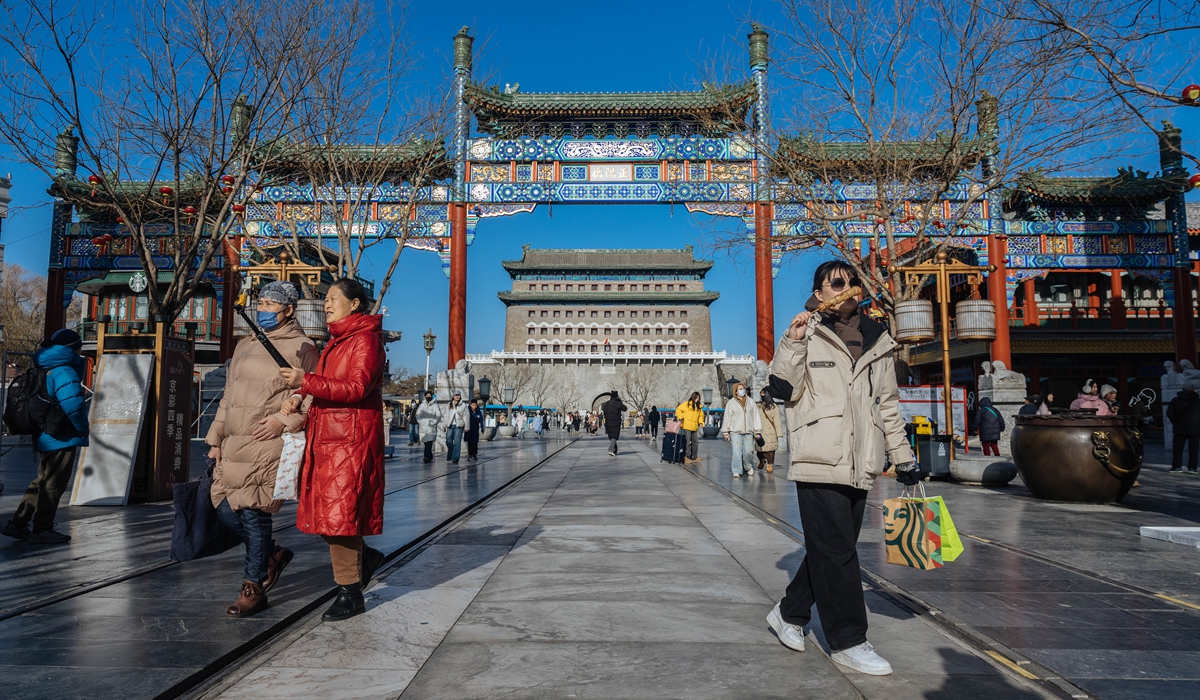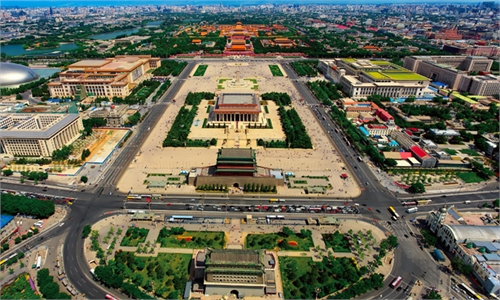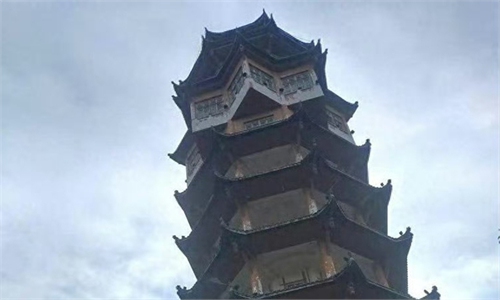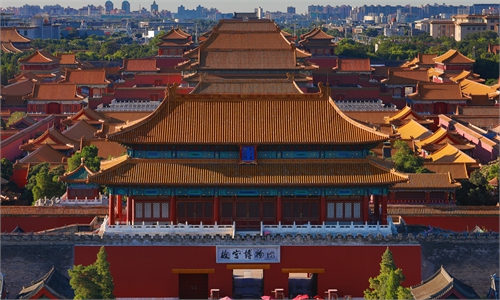ARTS / CULTURE & LEISURE
Beijing’s Zhengyang Gate arrow tower reopens after 3 decades

The Zhengyangmen Gate arrow tower, an important heritage site along Beijing's iconic Central Axis, reopens to the public on December 26 after more than 30 years of closure. Photo: Li Hao/GT
The Zhengyang Gate arrow tower, an important heritage site along Beijing's iconic Central Axis, reopened to the public on Tuesday after more than 30 years of closure.
The reopening follows the Central Axis's inclusion onto the UNESCO World Heritage List in July. The tower opened briefly in the early 1990s but remained inaccessible for decades since.
As one of the 15 heritage sites along Beijing's Central Axis, the Zhengyang Gate is composed of an enceinte and an arrow tower in the south and a main building in the north.
The arrow tower's reopening makes "cultural heritage more dynamic through its interaction with people's everyday life," Zhou Ziyu, director of the monitoring department of the Beijing Central Axis Heritage Protection Center, told the Global Times.
"Cultural heritage must always be connected with people," Zhou noted.
Built in 1439 in the Ming Dynasty (1368-1644), the arrow tower is a prominent building in Beijing's old city wall system. Situated at the northern end of Qianmen Street, the 0.21-hectare structure once functioned as part of a fortified gate complex, including the Zhengyang Gate building and other sections. It served both defensive and ceremonial purposes during the Ming and Qing (1644-1911) dynasties.
The tower has undergone several restorations throughout its history, with the most recent one beginning in 2020. This effort included work on the terrace, sculptures, window trim, interior woodwork and roofing. For every detail of the restoration, original materials, designs, craftsmanship, and methods are used to preserve the building's historical integrity, according to the Beijing News.
Zhou added that such comprehensive restoration was "a fundamental part" of making the site accessible to visitors.
"Before reopening, restoration work was completed, a special exhibition on Beijing's Central Axis was organized, and additional public facilities were installed," said Huang Xiao, head of the research department at the Beijing Central Axis Heritage Protection Center.
The arrow tower is currently in a trial phase expected to last about six months, during which admission is free. Once pricing is approved by relevant authorities, a fee will be introduced.
During the trial phase, visitors can make free, real-name reservations at least a day in advance online. On-site ticket sales are unavailable, and daily attendance is capped at 800 to ensure the safety of the historic structure.
"One notable feature of the arrow tower is its big number of narrow steps, so this limitation is also for the safety of visitors," Huang said.
Ren Youming, 33, a resident of Beijing's Shijingshan district, visited the arrow tower on Tuesday after hearing news of its reopening.
"I have visited the Zhengyang Gate before, but I have always been curious about its arrow tower, and what its interior looks like," Ren shared with the Global Times. "When I learned it was reopening after more than 30 years, I was thrilled."
The reopened areas include the ground level of the arrow tower, its northern terrace, and exhibition halls across four floors. The first three floors feature a special exhibition titled Beijing Central Axis: A Building Masterpiece? Exhibiting the Ideal Order of the Chinese Capital. It is divided into three sections: heritage description, cultural value, and preservation and management.
The fourth floor serves as a cultural lounge, featuring an area dedicated to intangible cultural heritage. Visitors can participate in tea ceremonies and handicraft activities, and view displays of antique furniture.
In addition to the exhibition, the arrow tower is a main exhibit itself.
"We hope the reopening allows visitors to gain a deeper understanding of its architectural features," said Huang.
Ren told the Global Times what impressed him most during the visit were the green-glazed roof ridge figurines of the tower building, which he described as "exquisite and majestic."



